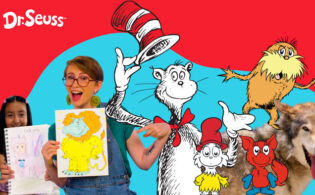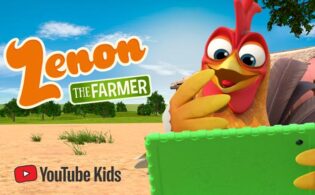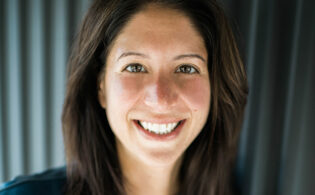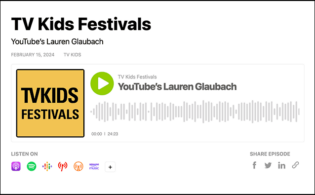Lauren Glaubach, director and global head of youth partnerships and programming at YouTube, shared with TV Kids Festival delegates some insights on how best to work with the leading video platform for kids.
Glaubach, in conversation with TV Kids’ Kristin Brzoznowski, discussed the evolution in YouTube’s kids and family strategy since the launch of the YouTube Kids app in 2015, and the keys to discoverability and engagement in the session, which you can view here.
“When we hit our one-month download target in the first hour after launching, I knew that we were really meeting an audience need,” Glaubach noted. “It’s always been very clear that kids’ content requires a different approach, different protections and just different treatment overall than any other content.”
In 2019, creators had to begin designating their content as “made for kids,” with YouTube then able to treat those shows differently on the platform, such as the removal of comments and personalized ads. “Not only do we have the YouTube Kids app as our separate experience for kids to enjoy on their own, but we also have ‘made for kids’ content on YouTube main for the co-watching family audience.”
She added, “The magic of YouTube is the thousands of creators who are making innovative and high-quality and diverse content and uploading it to the platform every day. We like to think about YouTube Kids as the platform where kids can explore their unique interests and develop their passions. I think we’re the one platform where Sesame Street’s Elmo can teach kids how to brush their teeth and Mark Rober can be doing cool science experiments and Snoop Dogg can be singing about girl power. When I talk to parents and kids, they often talk about this breadth and variety of content as what really sets the platform apart.”
On that commitment to high quality, Glaubach noted that in order to deliver a slate that is “enriching and positive” to kids’ lives, the platform has a youth advisory committee with independent experts specialized in child development, digital learning and children’s media. “We published a set of principles in late 2021. We shared those principles with the creative community, with everyone making kids’ and family content. The goal was to make the guidelines very clear and to help encourage the creative community to make content that inspires kids’ creativity and encourages them to make and problem-solve and celebrates diversity and inclusion. The goal was first to make them broadly available to all creators to help guide their own content strategies and content development. Then, beyond that, we integrated those principles into our product itself. We built machine-learning signals that we pipe deep into our search and discovery systems, so that we could actually raise high-quality content within our content recommendations. We also consider the principles within our monetization policies. They are a part of our eligibility criteria for the YouTube Partner Program. Viewership of content that reflects our high-quality principles has increased by 45 percent on YouTube Kids.”
YouTube Kids is available in 100-plus markets, allowing parents and caregivers to select from age-based content experiences. Since 2021, parents of tweens and teens have had access to “supervised experiences.” These are designed “for parents of tweens and teens who may have outgrown YouTube Kids and are looking for an experience that more closely resembles the main YouTube.”
Connected TV usage is helping to power gains in YouTube use. “YouTube is the most-watched video destination on TV screens in the U.S., more than any other streaming service,” Glaubach said. “We’re seeing that in our audience behavior, too. Within YouTube, the TV screen is our fastest-growing surface for watch time.”
For its teen users, a big focus this year is on well-being and safety. “We’ve introduced additional safeguards to content recommendations for teens. There are certain categories of content where if viewed as a single video are innocuous, but if viewed in repetition, can be problematic, especially for a teen audience. Think of topics of social comparison or physical comparison, where certain features are idealized or videos that idealize certain fitness levels or body weights, or content about social aggression. In repetition, it’s not good for teens. So, we’ve introduced changes that limit recommendations for those videos, and that’s live for teens in the U.S. We’ll be rolling out to more countries later this year. We’ve had features like take-a-break reminders and bedtime reminders in the app since 2018. But we’re revamping the features so that they’re more clear visually and they happen more frequently.”
On partnering with content creators, both traditional and digital native ones, Glaubach noted, “First, if you’re not on YouTube, join us. YouTube really is the best place where kids go to discover new characters, new IP. It’s also where they go to go deep on their favorite characters and stories. Two, if you are already on YouTube, lean into multi-format. Across long-form, video-on-demand, shorts, live—you have the ability to tell your story in the format that makes the most sense and to reach your audience no matter what they’re doing. They’re going to find your characters, find your story. It’s great to be everywhere they want to be. The third thing I would say is experiment and have fun.”
On the approach to curation at YouTube Kids, Glaubach said, “We have a higher bar for videos that are in the app. It’s a filtered version of YouTube with a much smaller set of videos and channels available. We work to identify videos that are age-appropriate, that reflect our quality principles and that meet the varied interests of kids around the world. We have a mix of algorithmic filters, human review and user input that help us determine what videos are available in the app. We have really invested in parent controls, making the app customizable for each family.”
As for what’s driving the YouTube Kids programming team, Glaubach said, “Their goal is to feature relevant, topical, diverse content within YouTube Kids. We celebrate different topics and holidays that kids love throughout the year—things like STEM or animals or Halloween. The goal is really to meet kids where they are and be relevant to them, no matter where they are in the world.”
The session wrapped with Glaubach discussing how YouTube uses its treasure trove of analytics. “We see a lot of growth in content that reflects kids’ daily lives. Videos related to morning routines grew 70 percent in the app. Videos around relaxation grew over 90 percent. Kids are really loving learning videos. Views of videos related to math grew 100 percent. Views of videos related to experiments grew 80 percent. Views of videos related to languages grew 250 percent. We see certain trends, and we look at data from an overall ecosystem perspective.”
And viewing data is shared with creator and IP-owning partners. “You can look at your viewer-retention curves. You can look within a video to see where viewers are concentrating and maybe rewatching certain parts of your video. You can also look at that same curve and see where viewers might be less interested and where they fall off. You might find that a secondary character is really resonating with your audience, and that might lead you to create a spin-off show featuring that secondary character.”
 TVKIDS
TVKIDS






